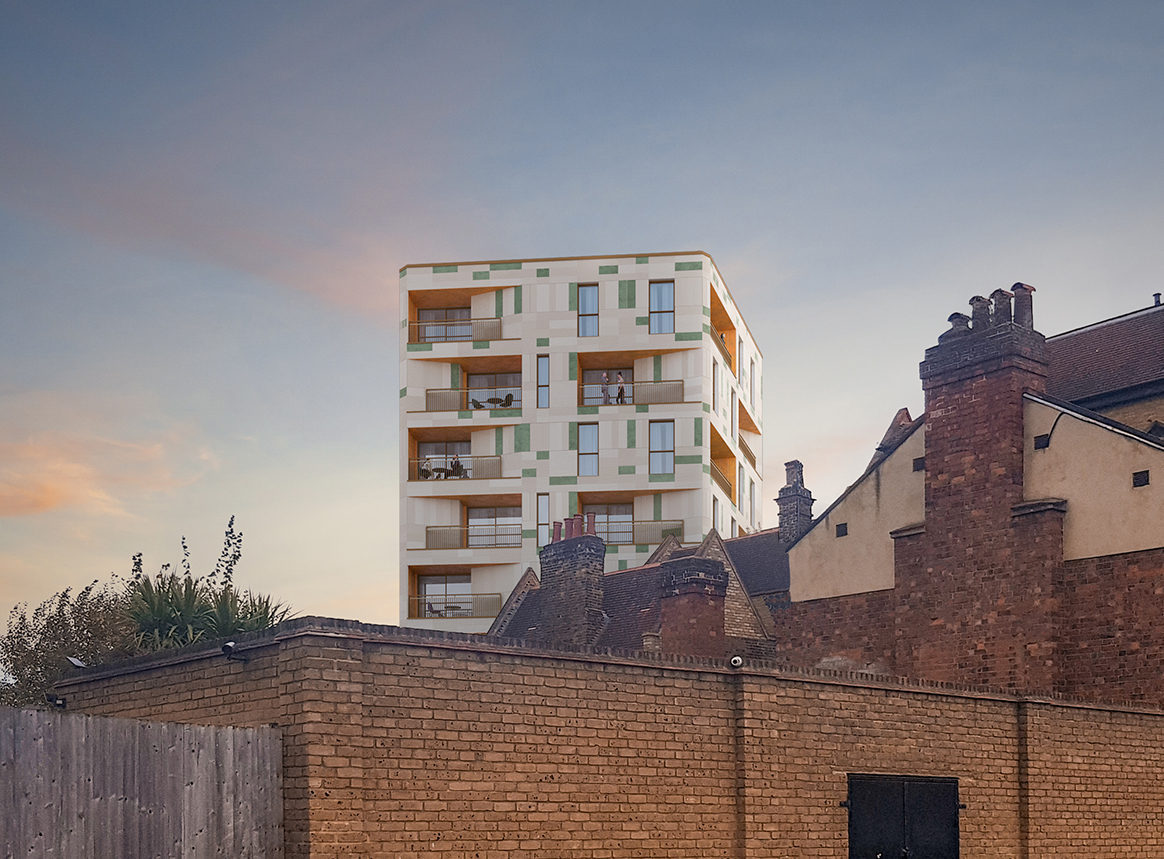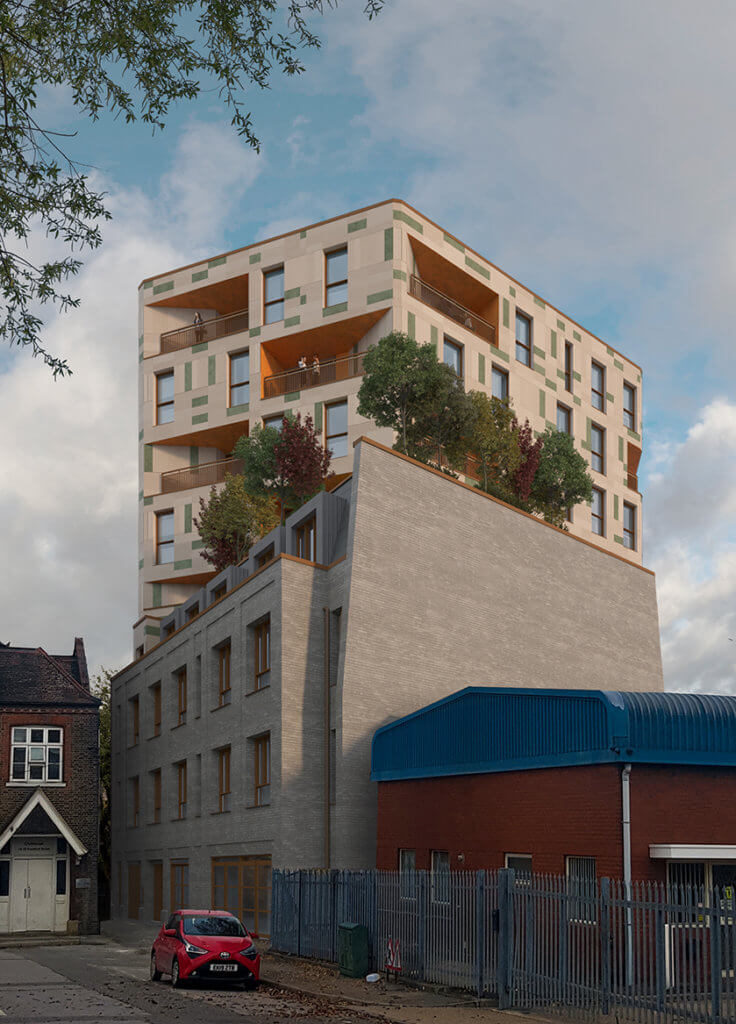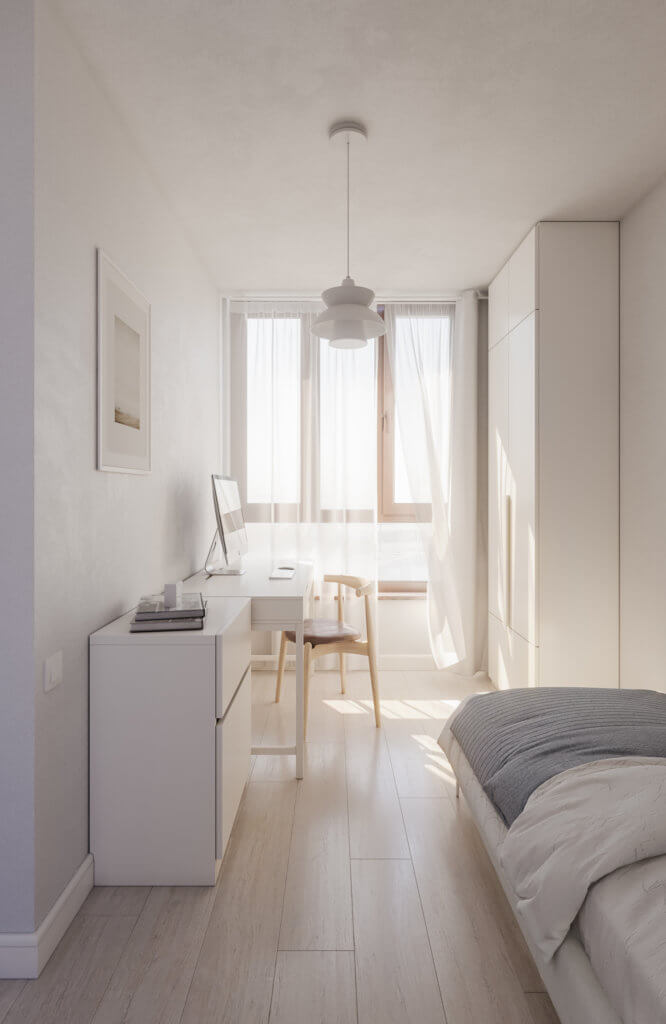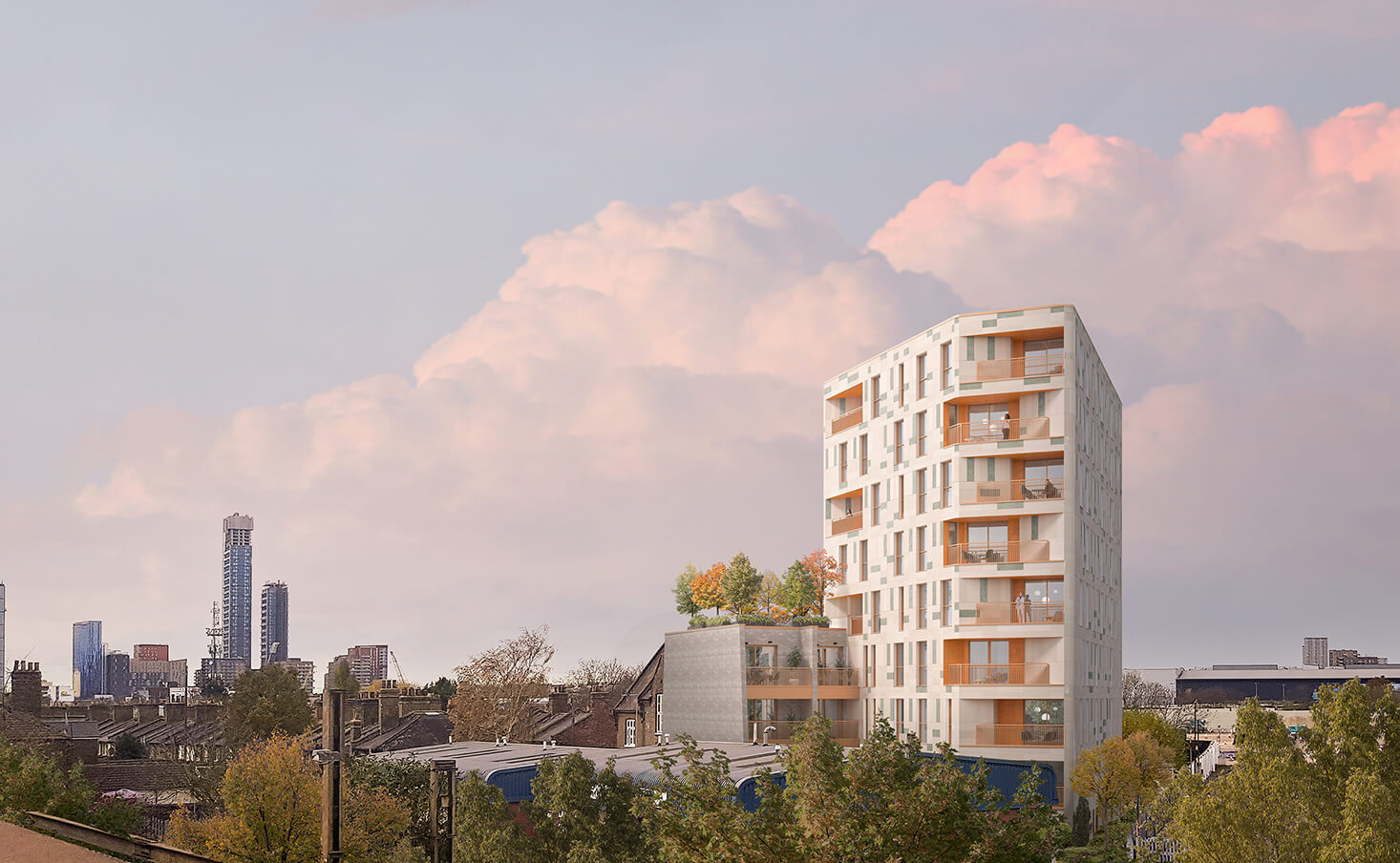Digital tools and careful collaboration bring brownfield development to life
Located in London’s Park Royal, 80 Goodhall Street is a new residential-led mixed-use development which will provide 38 new homes. Constructed on the site of an old warehouse, the nine-storey development features a mix of one, two and three-bedroom apartments across social rented, shared ownership and private tenures, together with a new community centre located on the ground floor.
airc.design and airc.digital began working on the project in January 2021, taking original designs by another studio through to RIBA Stages 3, 4 and 5 whilst building an Archicad model based on the DWGs provided by the previous design team.

Going back to planning
To enable the building to meet current building regulations, airc.design needed to make some amendments to the original design while retaining the same number and mix of dwellings.
For example, the proposed lifts and lift shafts had to be increased in size to allow for Part M compliant lifts. This had a knock-on effect on the footprint of the building which had to be increased and on the internal layout of the flats which had to be fully re-designed and reorganised.
Another challenge was the biophilic aspect of the planning stage consented design which included fixed-planters on the elevations. Following the tragedy of Grenfell Tower, building regulations exclude all combustible materials on the elevations of residential buildings over 18 metres tall, so the planters had to be removed from the design.
However, the planning officers were very keen to retain the biophilic element. airc.design was able to address this with proposals for an enhanced green roof.

With the help of Archicad, we were able to show and explain the reasons for our proposed amendments to the design immediately which helped to bring the client, contractor, design team and council with us, says Pierre Saunal, studio design lead and co-founder of airc.design.

A change of aesthetic
With the biophilic planters removed from the façade design, airc.design needed to address the building’s aesthetic to soften its appearance as requested by Ealing Council.
One of the main elements of the proposed re-design was the cladding on the tall element of the development, explains Pierre. Initially monochrome, we decided to explore a different approach.
The new façade design is a modern twist on the elevations of existing houses located in the conservation area south of the site and uses four colours extracted from the growth cycle of an English oak tree.
A shade of brown and three shades of green ceramic tiles are combined to create a pixelated pattern, going from brown through to darker and darker greens in a V-shape to represent the shape of a tree and the fact that the proposal is the first of its kind in the growth of the local area.

A giant jigsaw of 4955 cladding panels
There was no budget available for a bespoke façade, so airc.design needed to work with standard sized tiles and use them in an innovative way to achieve the desired effect.
Jaime Ingram, BIM leader and co-founder of airc.digital takes up the story:

We modelled all 4,955 cladding panels in Archicad. Every one was modelled individually, with the help of bespoke in-house GDL tools which airc.digital developed for the project. During this stage, we worked very closely with the tile manufacturer. Previously the manufacturer had been used to working in 2D, but our design involved a number of complicated junctions, so we persuaded them to work in 3D for this project. All codes came from the manufacturer, detailing the standard sizes of the cladding tiles, but we specified which colour should be used for each individual tile. This level of specificity was only possible because it was fully modelled in Archicad.
Using Archicad to communicate design amendments
airc.design and airc.digital worked in Archicad throughout the project which was instrumental in helping the team to perfect the design, manage a complicated workflow and communicate with multiple stakeholders as Pierre and Jaime explain:
Archicad and BIMx were essential to show how this new design would work. We also used BIMx for visualisation, but without the help of Archicad, it wouldn’t have been possible to convince the client, the contractor, the planning consultant and the council of our proposed amendments.
One feature within Archicad that was particularly useful was the graphical overrides, which enabled us to show the planners how different treatments would affect the look of the building.
In addition, when showing the 3D model in Archicad, we could make the changes on the go during the meetings. This made it easy for the project’s stakeholders to see what we were proposing, and also improved their confidence by having the changes made immediately.
Moreover, we needed to be very organised to manage the workflow. There were a few critical moments when we were working with multiple concurrent changes but Archicad’s workflow helped us to manage that.

A collaborative effort

airc.digital coordinated the project through the exchange of IFC models and BCF clash reports. Each discipline on the project used different software: airc.design designed the buildings using Archicad, structural engineers Fairhurst and M&E consultant Consolux and the façade cladding manufacturer worked in Revit, while Guarda Landscape used Vectorworks and SketchUp.
Meanwhile, the contractor Antvic, the developer Yellow Brick Capital and the property agents used a combination of the IFC models alongside the BIMx models and drawing sets produced by airc.design and BIMcollab visualisations produced by airc.digital.
It was essential that the models were shared correctly throughout the project as each element affected another. For example, the downwater pipes in the façade framing needed to be in very specific positions. The position of the panels drives the position of the framing and everything is interconnected, says Jaime.

Demonstrating the value of BIM
Expected to complete in Winter 2022, the development is an example of a collective and collaborative effort between all members of the project team. The openBIM philosophy of Archicad has been instrumental in enabling the coordination of the designs amongst all stakeholders.
We’ve had great feedback from the client, the council and the consultants, says Jaime. With Archicad, we’ve been able to navigate the project quickly and efficiently. They were very impressed that we could make many of the changes straight away.
Before this project, the contractor was working in 2D CAD. However, they have been convinced to start the change towards a BIM workflow and now open the model using BIMCollab. They’re now committed to working towards a common data environment and investing in new software and training.
Moreover, the contractor has seen the huge benefits of being able to work in this way and as a result, has requested to work with airc.design and airc.digital on future projects.

